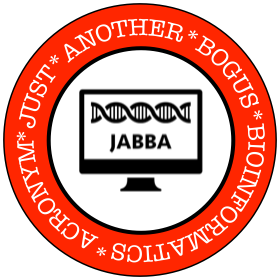101 questions with a bioinformatician #38: Gene Myers
This post is part of a series that interviews some notable bioinformaticians to get their views on various aspects of bioinformatics research. Hopefully these answers will prove useful to others in the field, especially to those who are just starting their bioinformatics careers.
Gene Myers is a Director at the Max-Planck Institute for Molecular Cell Biology
and Genetics (MPI-CBG) and the Klaus-Tschiar Chair of the Center for Systems Biology Dresden (CSBD).
Maybe you've heard of Gene for his pivotal role in developing the Celera genome assembler which led to genome assemblies for mouse, human, and drosophila (the first whole genome shotgun assembly of a multicellular organism). You may also know Gene from his work in helping develop a fairly obscure bioinformatics tool that no-one uses (just the 58,000 citations in Google Scholar).
His current research focuses on developing new methods for microscopy and image analysis; from his research page:
"The overarching goal of our group is to build optical devices, collect molecular reagents, and develop analysis software to monitor in as much detail as possible the concentration and localization of proteins, transcripts, and other entities of interest within a developing cohort of cells for the purpose of [developing] a biophysical understanding of development at the level of cell communication and force generation."
You can find out more about Gene by visiting his research page on the MPI-CBG website or by following him on Twitter (@TheGeneMyers). Finally, if you are interested in genome assembly then you may also want to check out his dazzlerblog ('The Dresden AZZembLER for long read DNA projects'). And now, on to the 101 questions...
001. What's something that you enjoy about current bioinformatics research?
The underlying technology is always changing and presenting new challenges, and the field is still evolving and becoming more "sophisticated". That is, there are still cool unsolved problems to explore despite the fact that some core aspects of the field, now in its middle-age in my view, are "overworked".
010. What's something that you don't enjoy about current bioinformatics research?
I'm really bored with networks and -omics. Stamp collecting large parts lists seems to have become the norm despite the fact that it rarely leads to much mechanistic insight. Without an understanding of spatial organization and soft-matter physics, most important biological phenomenon cannot be explained (e.g. AP axis orientation at the outset of worm embryogenesis).
Additionally, I was disgusted with the short-read DNA sequencers that, while cheap, produce truly miserable reconstructions of novel genomes. Good only for resequencing and digital gene expression/transcriptomics. Thank God for the recent emergence of the long-read machines.
011. If you could go back in time and visit yourself as a 18 year old, what single piece of advice would you give yourself to help your future bioinformatics career?
At age 18 its not so much about career specifics but one's general approach to education. For myself, I would have said, "go to class knuckle head and learn something from all the great researchers that are your teachers (instead of hanging out in your dorm room reading text books)", and for general advice to all at that stage I would say, learn mathematics and programming now while your mind is young and supple, you can acquire a large corpus of knowledge about biological processes later.
100. What's your all-time favorite piece of bioinformatics software, and why?
I don't use bioinformatics software, I make it :-) My favorite problem, yet fully solved in my opinion, is DNA sequence assembly -- it is a combinatorially very rich string problem.
101. IUPAC describes a set of 18 single-character nucleotide codes that can represent a DNA base: which one best reflects your personality, and why?
N — as it encompasses all the rest :-)






